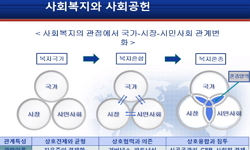This paper discusses the 2016 Giving Korea, which is a data that allows us to understand the individual donations in South Korea from various perspectives. The main analysis results are as follows. As of 2015, the donation participating rate is 46%, a...
http://chineseinput.net/에서 pinyin(병음)방식으로 중국어를 변환할 수 있습니다.
변환된 중국어를 복사하여 사용하시면 됩니다.
- 中文 을 입력하시려면 zhongwen을 입력하시고 space를누르시면됩니다.
- 北京 을 입력하시려면 beijing을 입력하시고 space를 누르시면 됩니다.
2016 Giving Korea를 활용한 우리나라 개인 기부 실태 분석 = The Analysis of Individual Donation Behaviors in South Korea using 2016 Giving Korea
한글로보기https://www.riss.kr/link?id=A107255953
- 저자
- 발행기관
- 학술지명
- 권호사항
-
발행연도
2020
-
작성언어
-
- 주제어
-
KDC
300
-
자료형태
학술저널
-
수록면
77-112(36쪽)
- 제공처
-
0
상세조회 -
0
다운로드
부가정보
다국어 초록 (Multilingual Abstract)
This paper discusses the 2016 Giving Korea, which is a data that allows us to understand the individual donations in South Korea from various perspectives. The main analysis results are as follows. As of 2015, the donation participating rate is 46%, and the average donation amount of donors is 570,000 Korean won. The most important criteria for choosing donation organization were transparency and reliability, and the most important reason that non-donors did not make donations is that they mistrust in donation organization. The 64% of people are aware of the tax benefits of the donations, and the similar rate of people agree that the tax benefits should be granted to donations. However, the percentage of people who do not agree on the tax benefits for the religious donations is higher than that of those who agree on the tax benefits. It is expected that donation organizations would spend 30% of the total donations on overhead, and that the appropriate overhead rate should be 20 percent. When comparing the donation plan with the donation practice, 30 percent of the people show a different behavior from the plan, and those who donated donate almost as much as planned. Finally, participation in the donation and participation in the candlelight vigils appear not to be clearly related.
동일학술지(권/호) 다른 논문
-
저출산과 학령인구 급감에 대한 대응 방안: 교육정책을 중심으로
- 텔코경영연구원
- 김영철 ( Young-chul Kim )
- 2020
-
- 텔코경영연구원
- 유경원 ( Kyeongwon Yoo )
- 2020
-
FDI 순유입과 금융시장의 발전이 경제성장에 미치는 영향: ASEAN 주요 5개국을 중심으로
- 텔코경영연구원
- 최돈승 ( Don Seung Choi )
- 2020
-
Tariff and Local Content Requirement in the Presence of Duopsonist Intermediate Markets
- 텔코경영연구원
- ( Jung Hur )
- 2020




 KISS
KISS


